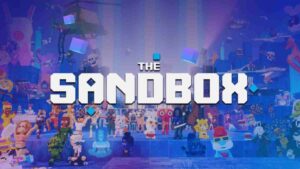Artyfact, the multiplayer arena shooter built on Web3 infrastructure, is launching a free-to-play tournament with a $30,000 prize pool. The event is open to all players and marks a clear move toward broader competitive engagement without the usual NFT paywall.
It’s not just a giveaway. This tournament is being framed as a full-scale test of Artyfact’s matchmaking, server load, and PvP meta. Whether that means future esports ambitions or simply community growth, it’s a noteworthy step for a game that’s still in early access stages.
Gameplay focuses on arena-style combat
Artyfact is best described as a third-person shooter with stylized visuals and quick-match PvP at its core. The combat leans arcade more than tactical, with fast time-to-kill and ability-based movement mechanics. If you’re familiar with titles like The Finals or Splitgate, the structure here will feel familiar, though layered with blockchain integration behind the scenes.
Weapons have noticeable recoil patterns and map layouts encourage vertical mobility. Matches are short and the objective is simple — climb the leaderboard by racking up kills and minimizing deaths. There’s no gear advantage in the tournament setting, which keeps the playing field relatively level.
That design choice helps keep the focus on reflex and positioning rather than build optimization or external upgrades.
Tournament format is fully open and browser-accessible
This is a free-entry tournament, meaning no tokens or NFTs are required to participate. Anyone with an Artyfact account can log in, start matchmaking, and accumulate ranking points. The structure is daily, with leaderboards updated regularly to reflect performance over time.
The client runs through a browser with no separate launcher, reducing friction for onboarding. That’s unusual for Web3 projects, which often hide core gameplay behind wallet gating or early access packages.
It also serves as a soft stress test. Match data from the tournament is being used to refine server logic and leaderboard integrity, which suggests that Artyfact’s devs are watching both player activity and game balance closely during this period.
Prize structure incentivizes consistent play
The $30,000 prize pool is spread across multiple tiers, not just the top-ranked players. This design encourages broader participation rather than funneling everything to a few pros. Payouts will be in the project’s native token, though players don’t need to hold or stake anything to be eligible.
This kind of format reflects a growing shift in Web3 game tournaments, which are moving away from gated events with high entry costs and toward free-access incentives tied to performance. It’s a structure that rewards time investment and skill, not just wallet size. It’s also a chance for Artyfact to showcase its economic layer without requiring users to engage with it up front.
A Web3 title trying to simplify onboardin
Artyfact runs on the BNB Chain and uses its native token primarily for cosmetics and upgrades outside of direct PvP. But in this case, blockchain integration stays in the background. No wallet connection is required to start playing, which is still rare among games in this category.
It’s a conscious shift toward low-friction entry points, likely intended to capture more traditional shooter players who aren’t yet involved in crypto ecosystems. The hope seems to be that players come for the game and then explore the blockchain layer later, not the other way around.
That design mirrors what’s happening in newer Web3 titles trying to appeal beyond niche NFT collectors — offer standard gameplay first, and only surface the blockchain components when needed.
Positioning itself in the Web3 shooter space
The competitive Web3 shooter niche is still small, with most projects struggling to balance gameplay quality with tokenomics. Artyfact’s approach here leading with mechanics, offering prize-backed competition, and avoiding early monetization pressure sets it apart from token-first games that launched too early.
Whether it can retain users beyond the prize pool remains to be seen. But as far as onboarding events go, this free tournament is structured smartly. It invites a broad audience, limits friction, and doubles as a gameplay showcase. For a game that wants to grow its identity in a crowded field, it’s a strategic move with real visibility upside.
Web3 Analyst & Play Blockchain Games Guide
CryptoKit breaks down Web3 gaming like it’s second nature. From tokenomics to airdrop strategies, she turns blockchain chaos into clear, actionable advice for players who want to win more than XP.




